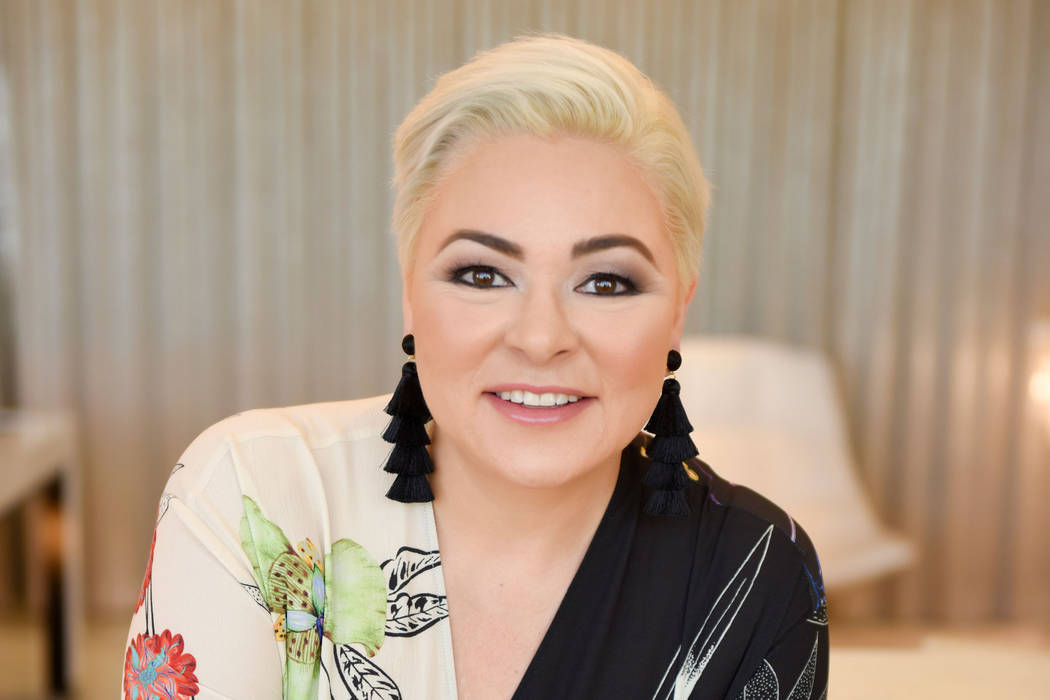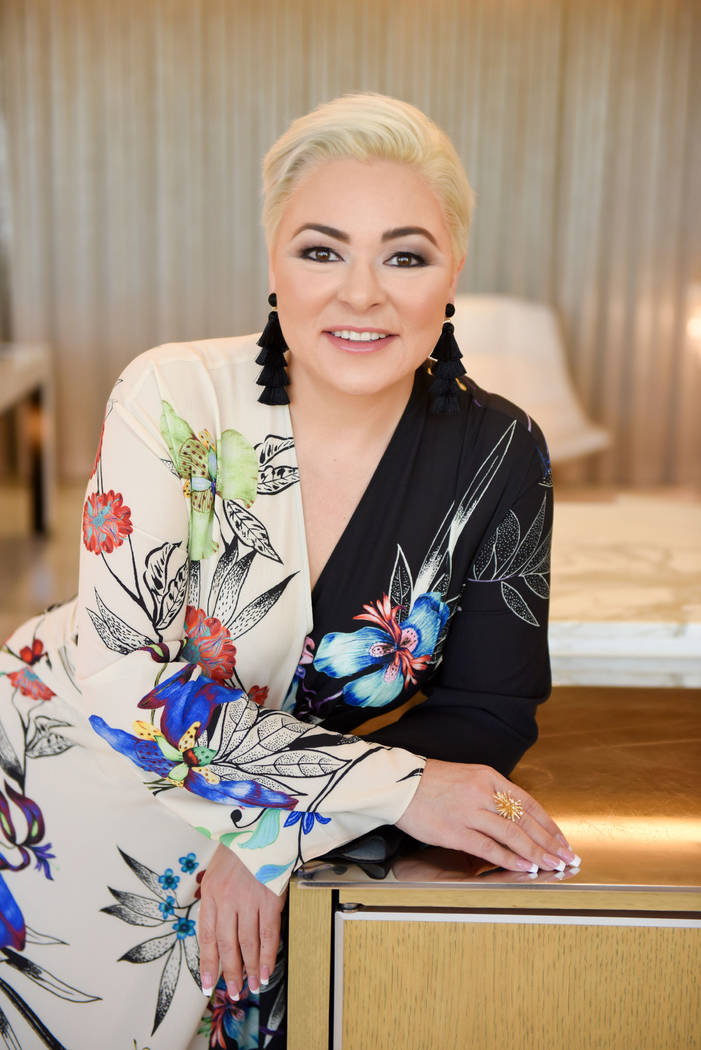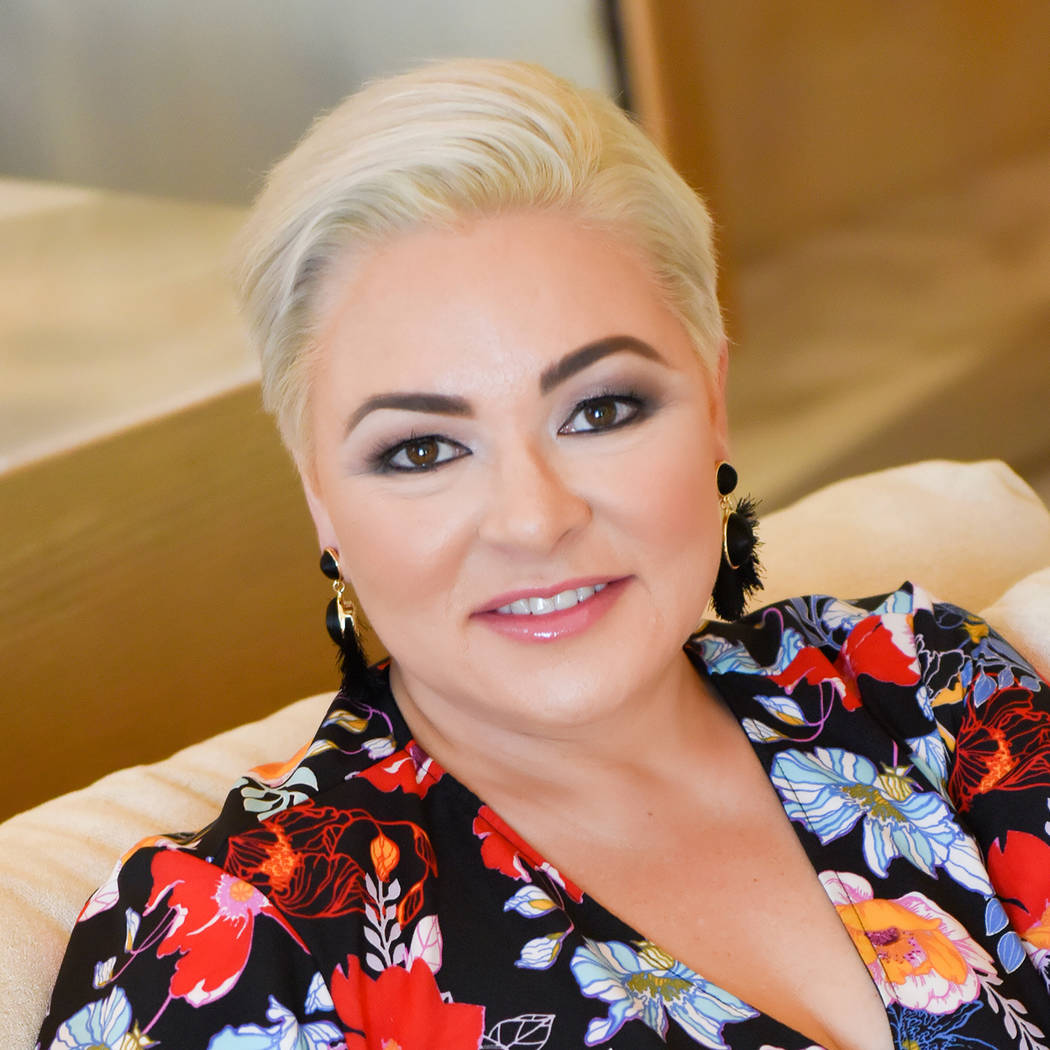Las Vegas author Sylvia Day’s ‘Butterfly’ takes flight
They go crazy for her in Brazil, snapped fibulas and all.
Mega-selling author Sylvia Day is explaining what it’s like going on a book tour in South America’s biggest country.
Cue the EMTs.
“In Brazil, I have to have bodyguards, completely, all the way around,” the 46-year-old explains, “not because I’m in any personal danger, but just because they’re so passionate. The minute I walk into a room, they just start screaming and people start fainting. People have had their ankles broken. The screaming is insane. It’s like One Direction screaming.”
Day has gotten used to it. She’s had to.
Traveling the world, promoting her books, has become as much a part of what she does as writing them.
It’s a recent weekday afternoon, and Day is — where else? — ensconced on a book tour.
This day she’s in Vancouver, and she’s not down with the chill in the air. She’d rather be in Las Vegas, where she has lived since 2013 at the urging of her accountant.
“I was living in the Temecula wine valley,” Day says, “and he told me that what I do, I could do anywhere in the world — and I should do it anywhere besides California.”
What Day does is sell books. Lots of them.
An incredibly prolific author with dozens of releases, Day is a No. 1 best-selling romance author in 28 countries with tens of millions of books in print in 41 languages.
She’s on the road promoting her latest release, “Butterfly in Frost,” released last week.
Though Day has been getting published for more than a decade and a half, it was her “Crossfire” series, launched with 2012’s “Bared to You,” that shot her to international stardom.
Seven years later, “Butterfly” marks Day’s longest span between books. We chatted with her the day after it hit the shelves:
Review-Journal: It’s been three years since your last book. You’ve talked about how “Butterfly” is a story of renewal. Does that apply to yourself as well?
Day: Whenever people are like, “Why did you take three years off?,” the assumption initially is, “Was it taking you three years to write this book?” The answer’s no. There’s other projects I’m working on. I also took some time away just to recover from the “Crossfire” series, which was five very big books that were written over four years with global book tours, tens of millions of books being sold. That was a tremendous amount of work, a lot of time away from my family, and it became important for me to just take some time to be home with them, to reconnect.
In the beginning, being prolific is important. You have to build this back list of works so that when people do find you, they can immediately get into this gateway of, “Look, there’s a whole library, I can just fall into it.” But, if you continue to be that prolific, you start repeating yourself and it’s not an event anymore when you put a book out. It just becomes something regular, like going to the store and buying milk. You don’t ever want to be regular.
The “Crossfire” series was obviously a game changer for you. How did the pace of life accelerate after that?
One of the great things about being a writer is that our uniform for work is our pajamas. You get up, take a shower, put on a fresh set of jammies, you get in your chair, you start writing. I mean, this is the best part of the day. …
That changes when you have a blockbuster book or series. At that point, the readers want to connect with you because something in the book has connected with them. They want to see you in person; they want to talk to you. That’s very unexpected. You’re no longer at your desk. … Now you’re onstage, you have a microphone, there’s hundreds, sometimes thousands, of people who are just sitting there, hanging on your every word. … It’s a huge change.
Was there much of a learning curve for you in terms of becoming comfortable being a public figure?
It was very difficult. I had a huge fear of public speaking prior to the time “Crossfire” just went crazy. So, when I was starting to do these huge book fairs, where they have these humongous auditoriums that were packed with people, just the terror, it was like, ‘Wow.’ … But on the other hand, you can’t not be appreciative of the opportunity to reach out to readers and talk to them. At this point, I’m accustomed to it and I enjoy it.
Some writers say that when they get so immersed in a character, the book almost writes itself, kind of like a method actor inhabiting a role. Do you have those moments?
Yes. I tell people all the time, because they’ll ask me, “Why did you do this? Why did the story go in this direction?” Especially if a character dies, somebody who everybody’s been rooting for, then they’re like, “Why?” They feel betrayed. I’ll go, “I asked myself the same question at the time I was writing it. When the scene happened, I was looking at my screen doing the same thing, going “Why!? Why does it have to happen this way?”
There’s a lot of times when my characters are in the middle of dialogue and one of them will reveal something to the other one and I’ll go, “No way! You did not just say that!” My kids will have their friends over and they’re like, “Dude, your mom’s yelling at somebody.” (Laughs) “Yeah, Mom’s yelling at her book again.”
One of the things that connects your characters is that they tend to be survivors. Have you ever thought about what draws you to those types?
Those are the type of characters that are fascinating to me, those are the type of people who are my friends, who I’m drawn to in my personal life, people who, when you meet them, you can tell, “They’ve been through something and have come out the other side.” … The evolution that took them to that place is what I like to explore in my books.
Speaking of characters, “Butterfly” introduces two new ones: Dr. Teagan Ransom and artist Garrett Frost.
This book deals with some pretty tragic stuff. Teagan is suffering from depression, which sometimes for her is debilitating.
I wrote so many beginnings to that story. I kept thinking, “I’m not going to be able to make it work.” Every time I’m writing the opening to the book, it’s depressing. I’m looking at it as a reader, going, “If I pick up this book and within the first two to three pages I’m feeling depressed, I’m not going to continue reading.”
You want to tell these stories that will impact people’s lives, but you also have to keep in mind that my job is to entertain them. I have yet to run across a topic where I’m like, “I’m never going to be able to touch that,” because I don’t think that’s possible. I think you can make anything work. It just may take you a really long time.
Contact Jason Bracelin at jbracelin@reviewjournal.com or 702-383-0476. Follow @JasonBracelin on Twitter.
Getting to know: Sylvia Day
Favorite indulgence
The black label, double-X Flaming Hot Cheetos, which unfortunately are banned in some places. So, sometimes when I'm on the road and I really want a bag, it's not happening.
What about pets?
I have three dogs and a cat. I have a German shepherd, a Shiba Inu and a Chihuahua-Pomeranian mix. The cat weighs 6 pounds, and she rules everybody else.
Favorite movie
"Gone with the Wind"
Place you always take visitors
There's a ton of places. I take them to T-Bones for steak. I like to take them to Giada's … . I'm a foodie, so it's always a food place.
Favorite destination
Any Disney property. We're a big Disney family.




















